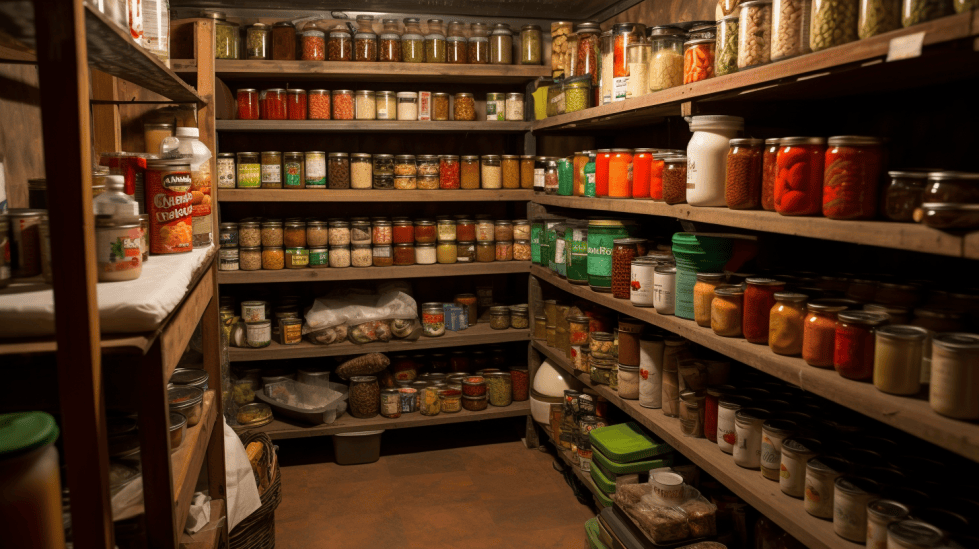Food Prepping for Survival
In today’s world, being prepared for emergencies is more important than ever. One crucial aspect of preparedness is having a well-stocked survival pantry, ready to sustain you and your loved ones during times of crisis. Food prepping for survival is not only about stockpiling non-perishable items, but also understanding the nutritional balance and ensuring your dietary preferences and restrictions are met.
As you venture into the world of food prepping, it is essential to understand the different types of foods appropriate for long-term storage, as well as the various strategies for maintaining their quality. This knowledge will help you create a well-rounded and efficient survival pantry that can sustain you for extended periods. Additionally, being aware of tips and tricks for shopping and storage will enable you to make informed decisions when sourcing and preserving your survival food items.
Key Takeaways
- A well-stocked survival pantry considers nutritional balance and dietary preferences.
- Understanding different food types and preservation methods helps maximize long-term storage.
- Implementing effective shopping and storage strategies ensures your survival pantry remains efficient and resourceful.
Understanding Food Prepping for Survival
As a prepper, I believe that food is one of the most essential components of survival. Preparedness in terms of food ensures that we have an adequate supply of nourishment in case of emergencies or unforeseen circumstances. To get started with food prepping, it’s essential to focus on building a solid foundation of non-perishable items that can last for an extended period.
In my experience, it’s best to begin with canned goods and cereals as they are easy to store and have a longer shelf-life. Aim for at least a 30-day supply of food to ensure you have enough sustenance during emergencies. This supply may include canned fruits, vegetables, meats, and dry goods like rice, pasta, and beans.
I’ve found it helpful to keep my survival pantry as diverse as possible, including not just the basic staples but a variety of seasonings, condiments, and even comfort foods like chocolate and coffee. Variety ensures that my family and I don’t experience palate fatigue, making it easier to maintain morale during tough times.
Another aspect of food prepping I’ve discovered is the importance of proper food storage and preservation techniques. Adopting the FIFO (First In, First Out) method ensures that older food items get consumed first, limiting food spoilage. Additionally, learning methods like canning, dehydration, and freezing helps to preserve my food supply’s freshness.
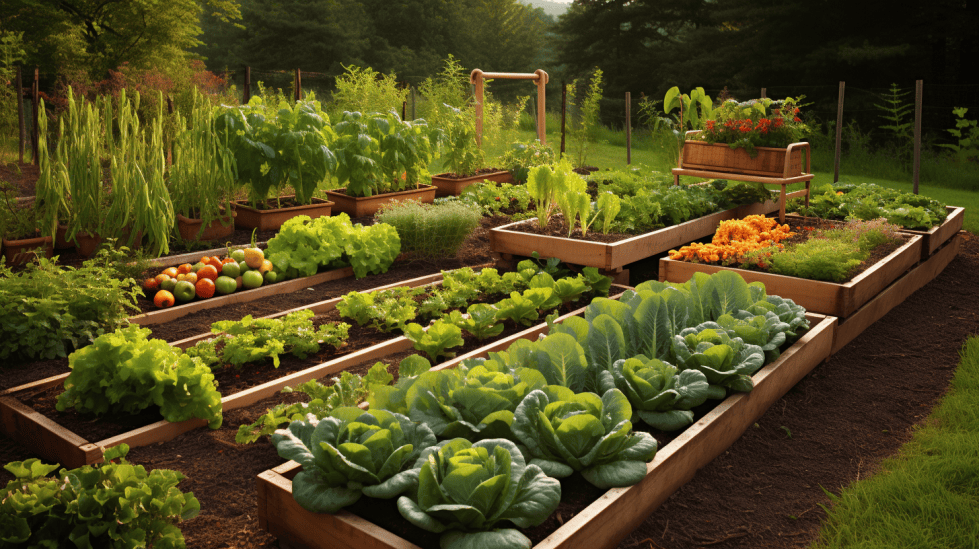
As a prepper, my focus isn’t just on storing ready-made food. I also invest time in acquiring knowledge and skills related to food foraging and gardening. This allows me to augment my stockpile with fresh, nutritious, and renewable food sources when the situation permits.
In conclusion, being prepared with a well-stocked and diverse survival pantry, combined with skills and knowledge of food preservation, foraging, and gardening, ensures that I can keep myself and my loved ones nourished during emergencies and unforeseen circumstances.
Essential Items in a Survival Pantry
In my survival pantry, I ensure that I have a variety of essential items to sustain myself and my family during emergencies or unexpected events. I will discuss some of the key items to stockpile in a well-prepared survival pantry.
Canned Food: I prioritize stocking up on canned food as it has a long shelf life and offers a wide range of options, including fruits, vegetables, and meats. These items provide nutrition and versatility for cooking various meals.
Water: Water is crucial for our survival, so I store a sufficient amount of clean drinking water. I also keep a few water purification methods on hand, such as filters or purification tablets, in case I need to treat water from alternative sources.
Oil: Cooking oil is an essential item in my pantry. It serves many purposes, like frying, baking, and preserving food. I prefer oils with long shelf lives, such as coconut oil or olive oil, to help extend the usability of my pantry supplies.
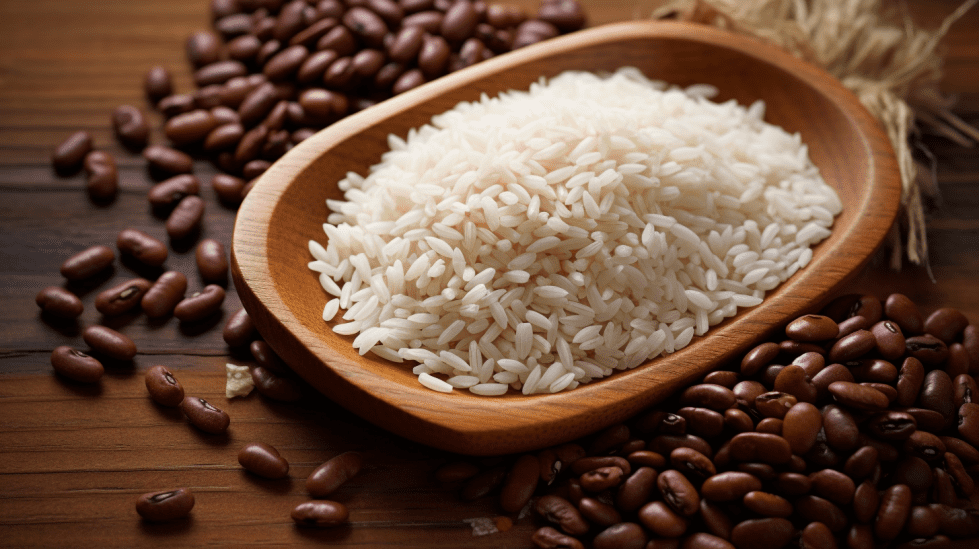
Rice and Beans: As a staple in many diets, rice and beans are an excellent addition to my survival pantry. They provide a good source of carbohydrates and protein, and when stored in airtight containers, they can last for an extended period.
Flour: Flour is a versatile ingredient that I can use in my survival pantry to create many different foods, such as bread, pasta, and baked goods. I choose all-purpose flour and whole wheat flour for their functionality and nutritional value.
Sugar: I include sugar, honey, or other sweeteners in my survival pantry, as they not only make life a bit sweeter but also help with food preservation, like fruit jams, and provide a quick source of energy when needed.
Salt: Salt is another critical item to have in my pantry. Aside from adding flavor to food, it acts as a natural preservative, allowing me to extend the shelf life of some perishable items, such as cured meats.
In summary, I make sure to stock these essential items in my survival pantry to ensure that I have a well-rounded supply of nutritious and versatile food options. By doing so, I can confidently face any unexpected situations and feed my family for an extended period.
Breakdown of Food Types
Protein Source
When it comes to prepping for survival, including a variety of protein sources is essential. Protein is necessary for maintaining muscle mass and overall health. Some excellent protein options to stockpile are:
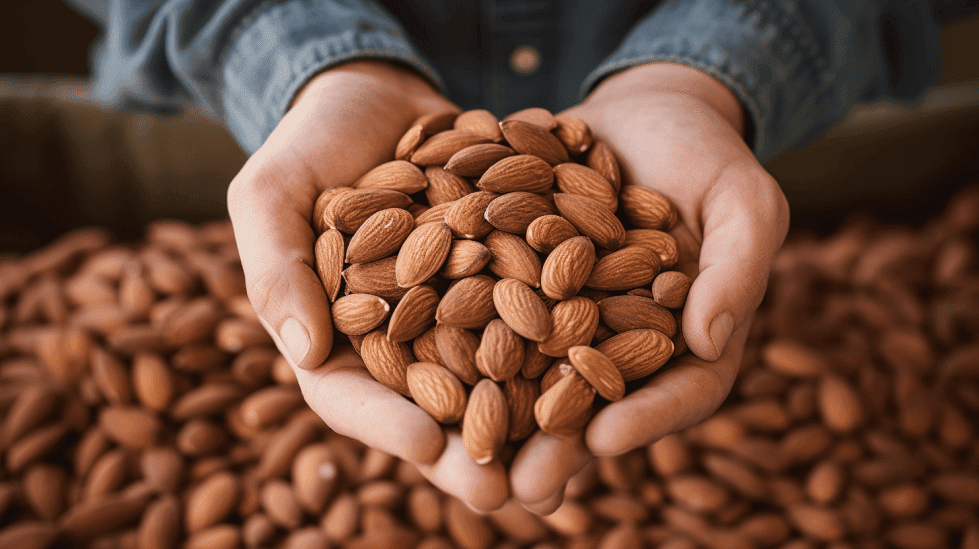
- Canned meats: Tuna, chicken, and turkey are high in protein and have a long shelf life.
- Dried beans and legumes: I recommend dried beans for long-term storage because they are lightweight, affordable, and an excellent plant-based protein source.
- Nuts and seeds: Almonds, peanuts, and sunflower seeds are rich in protein and healthy fats, providing a great energy source.
Carbohydrate Source
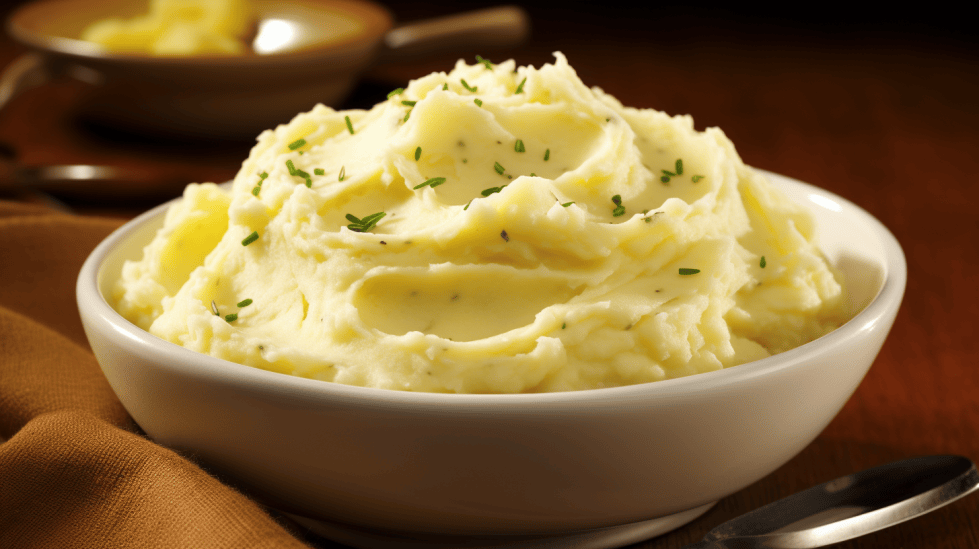
Carbohydrates are the body’s primary energy source, so including them in a survival pantry is crucial. Some carbohydrate sources to consider are:
- Oatmeal and cereal: These are easy to prepare and can be paired with powdered milk to increase their nutritional value.
- Crackers: A versatile option, crackers can be combined with various spreads and toppings to create satisfying and tasty meals.
- Instant mashed potatoes: A compact and lightweight option, instant mashed potatoes are an excellent source of energy.
Vitamin Source
Vitamins are essential for maintaining a healthy immune system and ensuring your body can function correctly during a survival situation. To ensure your stockpile contains a variety of vitamins, include:
- Dried fruits: These can be easily stored and are a natural source of vitamins and fiber.
- Canned vegetables: Although they may not be as nutrient-dense as fresh vegetables, canned veggies are still an excellent way to incorporate valuable vitamins into your diet.
- Multivitamins: Adding a good quality multivitamin supplement to your stockpile can help fill any nutrient gaps in your diet.
Fat Source
Fats are an essential macronutrient for overall health, as they provide energy and help with cell function. Some fat sources for survival food are:
- Peanut butter: High in calories and healthy fats, peanut butter is an excellent choice for survival situations.
- Olive or coconut oil: These versatile oils can be used for cooking and offer an easy way to incorporate fats into your diet.
- Nuts and seeds: In addition to being a good protein source, nuts and seeds are rich in healthy fats, making them a vital addition to your food stash.
By focusing on these key food types, I can ensure that my survival pantry is well-rounded and provides the necessary nutrients to thrive in any situation.
Stockpiling Strategies
When it comes to food prepping for survival, having a solid stockpiling strategy is crucial. I’ve found that a well-planned approach can make all the difference between success and failure in a crisis situation. In this section, I’ll share some essential stockpiling techniques that have worked well for me.
First and foremost, it’s best to start with understanding the importance of having a variety of food items in your stockpile. Long-term food storage should include canned goods, dried goods like rice and pasta, and preserved foods through methods like canning or dehydrating. Diversifying your food supply helps ensure you have proper nutrition and also prevents food fatigue.
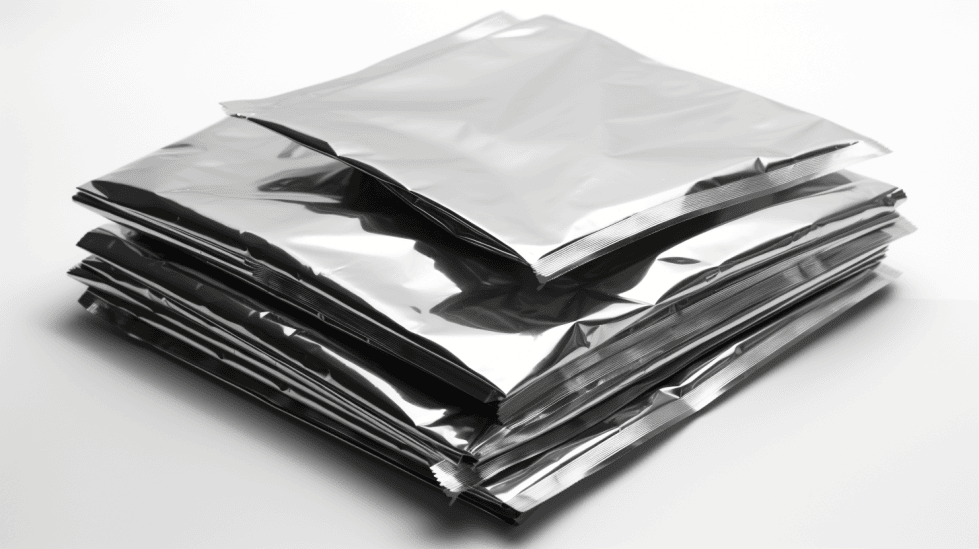
To extend the shelf life of my stockpile, I use mylar bags and buckets. Mylar bags help to protect the food from oxygen, moisture, and light, which can cause spoilage. Storing these mylar bags in food-grade buckets adds another layer of protection and makes it easier to organize and stack them in a storage area.
When stocking up, it’s important to pay attention to the expiration date of the food items. While shelf life can vary depending on the type of food and storage conditions, I always make sure to rotate my supplies to minimize the risk of consuming expired products. This also helps to maintain the quality and taste of your food.
Here are some key points I keep in mind while stockpiling:
- Choose foods with a long shelf life, such as canned vegetables, dried beans, and grains
- Utilize different preservation methods, like canning and vacuum sealing
- Use mylar bags and buckets for optimal protection and organization
- Continuously monitor and rotate the stockpile to keep track of expiration dates
In conclusion, having effective stockpiling strategies in place can significantly enhance your food prepping experience. By maintaining a well-organized, diverse, and long-lasting food supply, you can feel confident in your ability to weather any survival situation.
Detailed Item Recommendations
As a prepper, knowing which foods to stockpile for emergencies is essential. In this section, I will provide some detailed item recommendations for various types of foods that will help you build a well-rounded survival pantry.
Canned Goods
Canned goods have a long shelf life, making them ideal for food storage. I suggest stocking up on a variety of items:
- Canned fruits: These can provide essential nutrients and a sweet taste to balance out meals. Look for fruits canned in their natural juices or in water, as they have less added sugar.
- Canned vegetables: A good source of vitamins and minerals, canned vegetables also have a long shelf life. Aim for a mix of different types, such as green beans, carrots, and corn.
- Canned meats: High in protein, canned meats like chicken, tuna, and ham can be incorporated into many different dishes.
Grains and Legumes
Grains and legumes are essential sources of energy and nutrients. They also have long shelf lives and are relatively inexpensive:
- White rice: White rice can last for years when stored properly and is an affordable, versatile staple to have in your pantry.
- Pasta: Dried pasta is another long-lasting staple that can be used in many recipes.
- Legumes: Beans, lentils, and chickpeas are great protein sources and also provide essential nutrients and fiber. Store them dry or canned for a longer shelf life.
Condiments and Spices
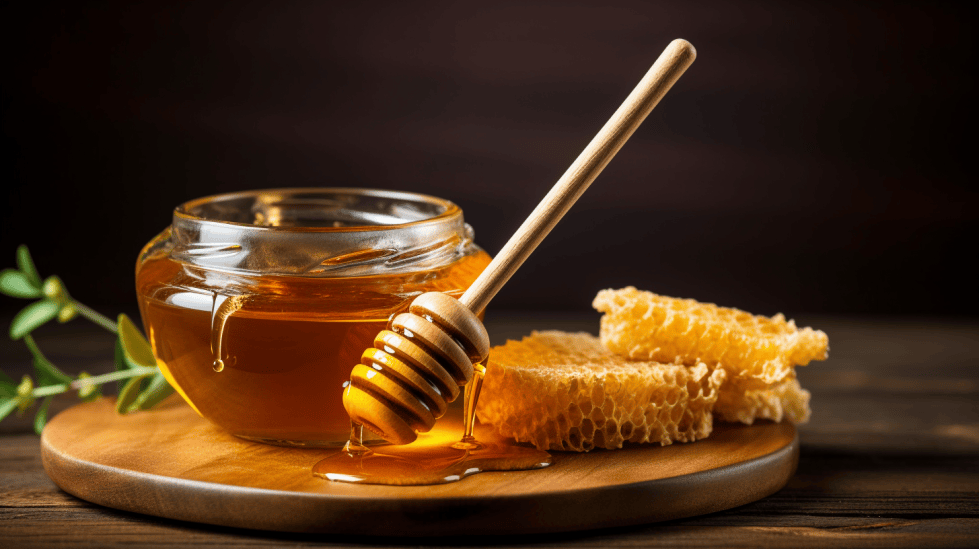
Adding condiments and spices to your stockpile helps enhance the flavor of your meals and can offer some nutritional benefits:
- Spices: Stock up on a variety of spices like salt, pepper, garlic powder, and your personal favorites for seasoning dishes.
- Honey: As a natural sweetener with a long shelf life, honey is a versatile addition to your pantry.
- Jams: Jams and jellies add sweetness and flavor to meals and can also be used in baking.
Beverages
Staying hydrated is essential to survival. Along with water, consider adding some beverage options to your stockpile for variety:
- Tea: Both black and green tea are rich in antioxidants and can provide a comforting, warm drink option.
- Coffee: Providing a caffeine boost and a sense of normalcy, coffee is a staple for many people’s morning routines and worth including in your stockpile.
Sweets and Snacks
Including sweets and snacks in your survival pantry can help with morale and provide a break from monotony:
- Nuts: Rich in healthy fats and protein, nuts are a satisfying snack option.
- Dried fruits: Dried fruits like raisins, apricots, and mango slices offer natural sweetness and a concentrated source of nutrients.
Remember to keep your prepping inventory well-rounded and up-to-date by regularly rotating items and keeping track of expiration dates. Stay prepared, and happy prepping!
Cooking and Preparing Survival Foods
When it comes to cooking and preparing survival foods, I believe that having a variety of ingredients and techniques is crucial for maintaining a nutritious and enjoyable diet during times of crisis. Let me share with you a few essentials that I consider when preparing my survival pantry.

First and foremost, having a reliable source of carbohydrates is important. Oats, for example, are a great choice as they are rich in nutrients, have a long shelf life, and are easy to prepare. Simply add boiling water, and within minutes, you’ll have a warm, comforting meal. Plus, oats can be used in numerous recipes like oatmeal, baking, and as a binder in veggie burger recipes.
As a survivalist, I always keep some essential baking ingredients in my pantry. These include yeast, baking powder, and baking soda. Yeast is essential for making bread, while baking powder and baking soda are key leavening agents for other baked goods. Having these items on hand allows me to prepare a variety of tasty and comforting foods, even during emergencies.
Oxygen absorbers are another vital component in my survival food preparations. These small sachets help to prolong the shelf life of certain dry goods like grains and beans by removing any excess oxygen within the packaging. By including oxygen absorbers in my stored food, I can maintain the freshness, taste, and nutritional value of these items for longer periods.
When considering cooking techniques for survival situations, it’s important to have versatile cooking methods available. One option is cooking on an open fire or using portable stoves, both of which can help prepare a variety of meals while maximizing fuel efficiency. Another alternative is “no-cook” meal options – these can include foods that simply require boiling water for preparation, or even pre-made meals like MREs.
In conclusion, preparing survival foods involves combining a range of useful ingredients, storage techniques, and cooking methods. By stocking up on essentials like oats, yeast, baking powder, and oxygen absorbers, I can ensure that my survival pantry is well-equipped to keep me and my loved ones fed during any emergency situation.
Food Storage and Preservation
When it comes to food storage for survival, having a variety of options is essential. In my experience, a well-rounded food storage plan should include freeze-dried foods, dehydrated foods, canned goods, and MREs (Meals Ready to Eat). Each of these options has its benefits and drawbacks, so it’s essential to select the best combination for your specific needs.
Freeze-dried foods are an excellent choice for long-term food storage. They can maintain their nutritional value and quality for up to 25 years when properly stored. I find that freeze-drying not only preserves the taste and texture but also minimizes the weight and bulk of the food, making it easy to transport and store. Some of my favorite freeze-dried foods are fruits, vegetables, and pre-cooked meals.
Dehydrated foods are another reliable option. Using methods such as air drying or sun drying, most of the moisture is removed from the food, inhibiting the growth of bacteria and other microorganisms. While dehydrated foods don’t have as long of a shelf life as freeze-dried options, they’re still a valuable addition to my food storage strategy. Some common dehydrated foods include jerky, dried fruits, and vegetables.
Canned goods are a staple in any survival food storage plan. They offer a wide variety of food choices, from fruits and vegetables to meats and soups. One reason I rely on canned goods is that they are airtight and have a reasonably long shelf life. Additionally, if stored in a cool, dry, and dark place, I’ve found that many canned foods can last well beyond their expiration date.
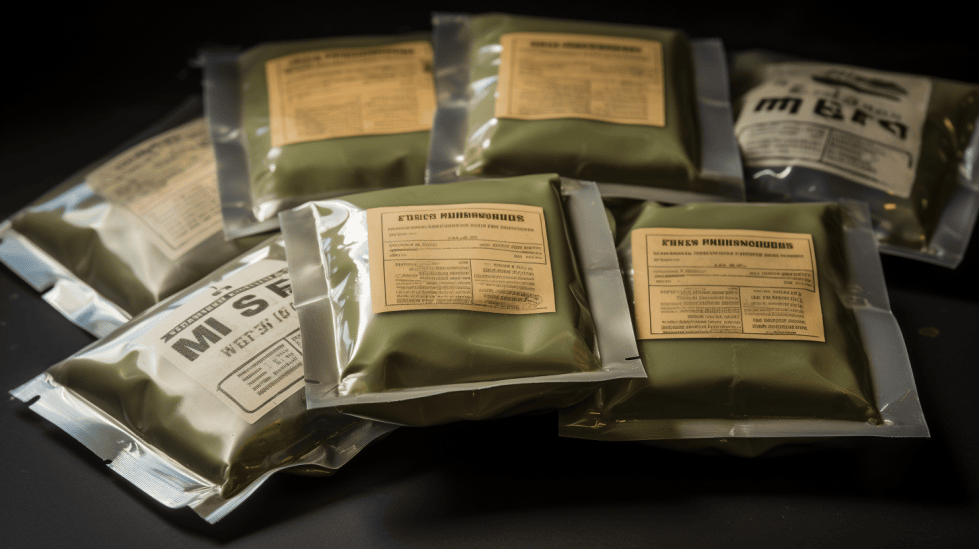
MREs come in handy during survival situations when I need a quick, nutrient-dense meal. These ready-to-eat meals are designed for military use, so they’re compact and lightweight. While they don’t have the same shelf life as other food storage options, they’re still useful in emergencies. I usually keep a few MREs on hand for those instances when I don’t have time or resources to prepare a meal from scratch.
In conclusion, a well-rounded food storage strategy covers all nutritional requirements with an emphasis on long shelf life and ease of use. By incorporating freeze-dried foods, dehydrated foods, canned goods, and MREs into my storage plan, I ensure that I’m prepared to face emergencies and survival situations.
Considerations for Dietary Preferences and Restrictions
When prepping for survival, it’s essential to consider the dietary preferences and restrictions of those who will consume the stored food. I’ve gathered some important points to help accommodate these needs while still maintaining a balanced, nutritious stockpile.
Firstly, I recommend including a variety of fruits and vegetables in the stockpile. These provide essential vitamins, minerals, and fiber that can help maintain good health during survival situations. Fruits such as apples and oranges have a relatively long shelf-life, while canned or dried vegetables and fruits can be stored for even longer periods.
Incorporating dairy products in the survival food stockpile is a good way to ensure a source of calcium and protein. However, some people might be lactose intolerant and cannot consume regular dairy products. For those individuals, it’s essential to include dairy alternatives like almond milk or lactose-free products.
Lentils are a fantastic addition to any survival food stockpile. They are versatile, protein-rich, and a good source of fiber. Lentils can be used in a wide range of dishes, from soups to stews, offering both nutrition and variety to the diet. Including both dried lentils and canned lentil-based products will provide options for those with dietary restrictions.
When considering dietary preferences such as vegetarianism or veganism, it’s essential to make sure the stockpile provides adequate protein and other nutrients typically obtained from animal sources. Beans, nuts, and seeds are excellent plant-based protein sources that also have long shelf lives. Inclusion of fortified plant-based milk and cereals can help ensure the availability of critical nutrients like vitamin B12 and calcium.
Lastly, be mindful of any food allergies and intolerances when selecting items for the survival food stockpile. Reading labels carefully and including alternatives like gluten-free grains and snacks can accommodate those with specific dietary needs, ensuring everyone has safe and nutritious food options during emergency situations.
Ensuring Nutritional Balance
When I’m building my emergency food supply, it’s crucial to maintain a proper nutritional balance to support my health during a crisis. I’ve learned that a well-rounded stash should include a mix of food types, vitamins, and essential nutrients.

First, I make sure to have both white and brown rice in my pantry. White rice has a longer shelf life and is a reliable source of energy, while brown rice offers additional nutritional benefits, like fiber and vitamins. It’s essential to properly package these items, using airtight containers or Mylar bags, to maintain their quality.
For convenient and energy-dense options, I always stock up on protein bars. These are easy to grab in a hurry and provide a quick supply of energy and essential nutrients. Additionally, they require no preparation, which is a significant advantage during an emergency.
As emergencies can lead to irregular and limited meals, I ensure that vitamins are part of my preparedness plan. Multivitamin supplements help cover any potential gaps in my nutrition by providing essential micronutrients, further supporting my health during a crisis.
Even though these staples form the basis of my emergency food supply, I don’t forget the importance of variety in my diet. Including different food options can prevent monotony and enhance morale during difficult times. Plus, it reduces the risk of nutritional deficiencies.
Finally, I pay attention to proper food storage. Keeping food in a cool, dry, and dark place can help tremendously in prolonging its shelf life and maintaining nutritional value.
Overall, having a diverse and balanced food supply is critical in any emergency situation. By including essentials like protein bars, white and brown rice, vitamins, and a variety of other healthy items, I’m better equipped to face any challenge that comes my way.
Shopping Tips for Preppers
As a prepper, I’ve learned that efficient grocery shopping is crucial for building a solid survival food supply. Here are some tips to help you maximize your time and money while ensuring you’re truly prepared.
First and foremost, always have a list when you go to the grocery store. This saves me time and helps reduce the impulse to buy unnecessary items. Consider grouping items according to their location in the store, so you move through the aisles efficiently.
For a family, it’s important to consider everyone’s dietary needs and preferences. However, also be mindful of the foods that have a longer shelf life. For example, choose whole grains over refined products, since they tend to last longer and offer more nutritional value.
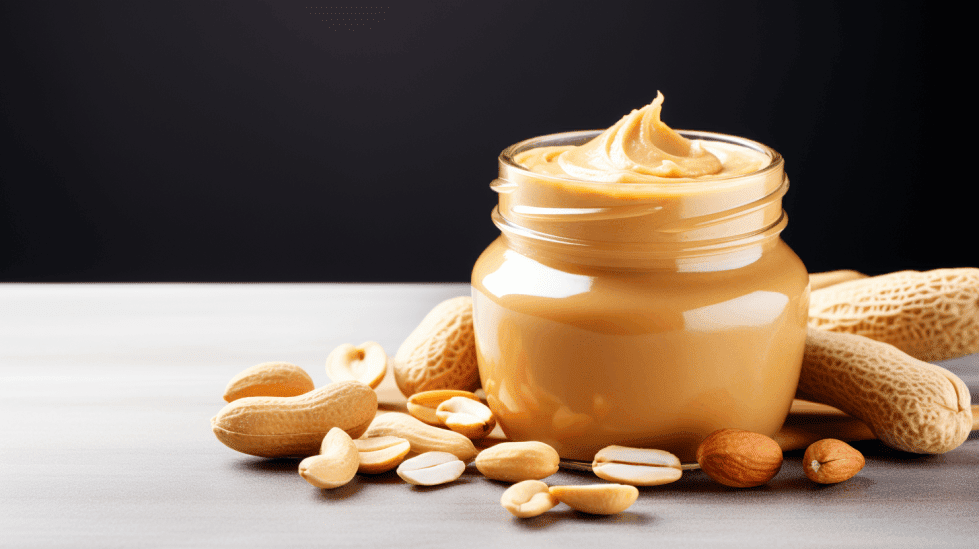
When selecting shelf-stable foods, I focus on high-calorie and nutrient-dense options. Some examples include condensed milk and peanut butter. These are not only versatile but also provide essential fats and proteins required during survival situations.
During my shopping trips, I keep an eye out for sales on non-perishable items. Buying in bulk when prices are low ensures my survival pantry is well-stocked for the long haul. Remember to rotate your stock to prevent spoilage and maintain freshness.
Additionally, diversify your food sources by considering alternative establishments like local farmers markets or wholesale clubs. You may find better prices, a more varied selection, and even fresher options than traditional grocery stores.
Finally, don’t underestimate the importance of water and cooking essentials in your survival pantry. Stock up on water purification tablets and long-lasting fuel sources to keep your food safe and ready to eat.
With these tips in mind, I’ve managed to create a well-rounded and cost-effective survival food supply that keeps me prepared for any unexpected situation.
Frequently Asked Questions
What are some essential items for a doomsday prepper food list?
Some essential items for a doomsday prepper food list include non-perishable items, such as canned foods, rice, beans, pasta, and dehydrated foods. It’s also important to include a supply of water. The CDC recommends storing at least 1 gallon of water per day for each person and each pet.
Which survival food brands offer the best shelf life?
Some of the best survival food brands that offer products with long shelf lives include Mountain House, Legacy Food Storage, and Augason Farms. Their freeze-dried and dehydrated products can have a shelf life of 25 years or more, depending on the specific product and storage conditions.
How do you properly store food for long term survival?
To properly store food for long term survival, you should keep it in a cool, dry, and dark place. You may also want to consider using oxygen absorbers or vacuum sealing your food to extend its shelf life. Canned goods can last one to four years with proper storage, and in some cases, even longer.
What are the best food items to buy from a grocery store for prepping?
The best food items to buy from a grocery store for prepping are those with long shelf lives and high nutritional value, such as canned goods, rice, pasta, peanut butter, and nuts. It’s also important to consider the dietary needs and preferences of your family members or fellow preppers when choosing food items.
What is the recommended stockpile checklist for prepper food?
A recommended stockpile checklist for prepper food includes a combination of non-perishable items with long shelf lives, such as canned goods, dried foods, and foods high in protein, as well as a supply of water. Your stockpile should ideally cover a minimum of three days to several weeks, depending on your circumstances and needs.
What are some top-rated prepper food buckets for long-lasting storage?
Some top-rated prepper food buckets for long-lasting storage include Mountain House’s Just In Case Essential Assortment Bucket, Augason Farms 30-Day Emergency Food Storage Supply, and Legacy Food Storage’s 60 Serving Entree Bucket. These food buckets provide a variety of meals and can have a shelf life of up to 25 years or more with proper storage.


